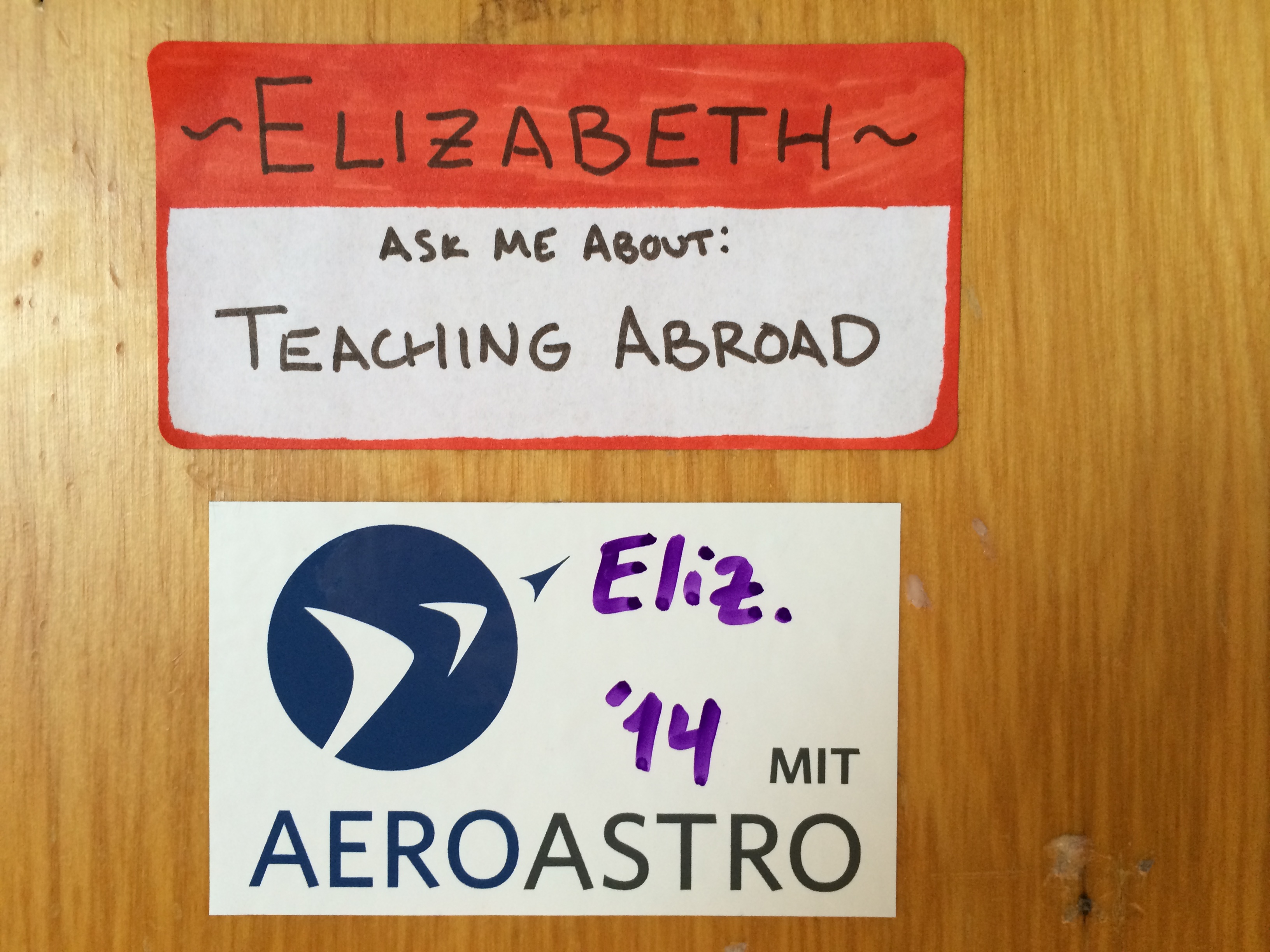Teaching Abroad: a Guest Blog Post by Elizabeth Q. ‘14 by Anna H. '14
Learn a new language, teach science.
Ciao! Mi chiamo Elizabeth, e sono una amica di Anna. (Hello! I’m Elizabeth ‘14, one of Anna’s many friends). I’m here to talk about teaching at MIT – and specifically, you teaching at MIT.
What?
There are many things to love about the MIT student community, and one of them is that we are all teachers – whether it’s working and learning together in the Unified lounge (my home-away-from-French House), spontaneous upperclassmen tutoring services (see #2 in that post – yes, I’m that Elizabeth), or any of the many other (see #17) ways to teach,* you are most definitely coming to MIT to teach as much as you are to learn.
*If you are anything like me you now have 8 more tabs to MIT Admissions blog posts open in your browser of choice >:]
CPW just happened at MIT, which for all involved means food, fun, craziness – and name tags! Here are the two that were plastered on me this past Friday:

The AeroAstro one is from the Academic Midway. I got to talk to many an excited Course 16 pre-frosh – and also many an undecided one, especially between Course 2 and Course 16. Course 16 is 8x better. The red one is from French House dinner – all LMFers had a custom nametag made by Abby ’17 in which we suggested conversation topics ranging from 3D printing to music groups at MIT to yes, teaching abroad.
As my name tag suggests, ask me about teaching abroad! Here are some Qs paired with some As, but please feel free to contact me at [email protected] if you would like more As for more Qs.
-
- How will teaching at MIT help me learn to speak Italian??
Good question! As part of the MISTI Global Teaching Labs (GTL) Initiative, I spent three weeks this past IAP teaching at a liceo scientifico in Mantova, Italy, which is a beautiful city with a lot of history. There is no language requirement for this program, and I landed in Milan’s Linate airport on January 7 knowing exactly two words in Italian: Ciao and Arrivederci. Thanks to the GTL programs, which place MIT students in host families, I emerged from Italia three weeks later able to ask “Dove è il bagno?”, read books written for three-year-olds, and conjugate all the important verbs* and regular verbs in the present and perfect tenses. I’d call that progress, wouldn’t you?*pro tip for western languages: if you know the equivalents of to be, to have, must, can, want, could, would, will, may, and to go, you are probably all set for most of life.

- What if I’m not interested in learning Italian?
MISTI has international teaching programs in several other countries, and more seem to be starting up each year. The summer after my freshman year I went to Germany for two months as part of the GTL Germany program. International teaching opportunities also exist in China, Korea, Mexico, Israel, and Spain – and none of these have language requirements.
- How will teaching at MIT help me learn to speak Italian??
-
- So what did you teach when you were in Italy and Germany?
Physics! In Italy I taught a unit on waves and interference to fourth-year students, and a unit on reference frames to third-year students, amounting to ~20 hrs/wk of teaching. In Germany I taught special seminars on Special Relativity, Gyroscopes, and the Physics of Flight – amounting to ~10 hrs/wk of teaching.
- So what did you teach when you were in Italy and Germany?
-
- Wait, are you a physics major?
No. Typically, MIT students in these programs are teaching basic science (physics, chem, bio) and math (calculus, stats, algebra, trig) at a high-school level. Once you’ve taken your GIRs, you’ll know all the material you’ll be teaching, and plenty of students teach subjects unrelated or only marginally related to their declared major.
- Wait, are you a physics major?
- I don’t know if I’m interested in teaching.
I encourage you to think about trying one of the Global Teaching Labs anyway. Sure, teaching is a lot of work and will involve a lot of time for preparing lessons, but it’s no more work than you’ll be putting into your classes during term. Any of the GTLs is a great way to explore teaching – you get to try teaching very intensely for a relatively short period of time, while learning about a different education system and a new language and culture. Some people try teaching and realize they love it – and that could be you.